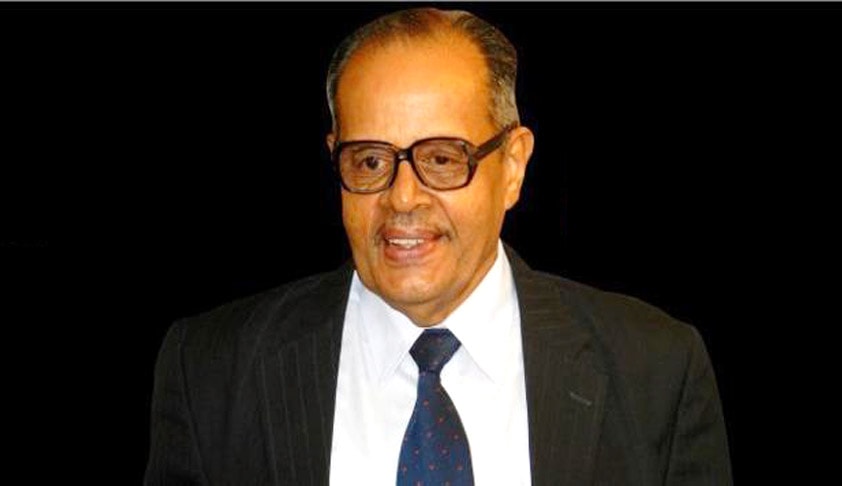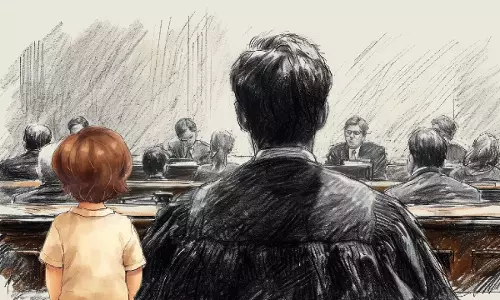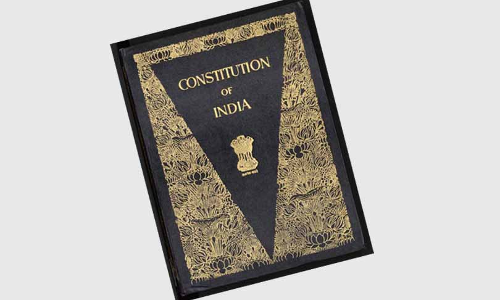
The Supreme Court by striking down the National Judicial Appointments Commission Act and the 99th Constitution (Amendment) Act as unconstitutional has focused public attention once again on the process of appointment of Judges to the higher judiciary. Neither the Executive-appointment model which prevailed till 1998 nor the Judges-appointing-Judges (Collegium) model as practiced till...
The Supreme Court by striking down the National Judicial Appointments Commission Act and the 99th Constitution (Amendment) Act as unconstitutional has focused public attention once again on the process of appointment of Judges to the higher judiciary. Neither the Executive-appointment model which prevailed till 1998 nor the Judges-appointing-Judges (Collegium) model as practiced till recently have been found satisfactory to preserve the independence of judiciary while promoting efficiency and accountability in the system. However, the majority view of the Constitution Bench which decided on the issue was in favour of retaining the collegium system with appropriate changes and is now hearing views and suggestions from Government, the Bar and civil society on how to reform the process while keeping control of appointment of Judges with the judiciary itself. Before proposing some desirable reforms, it is necessary to examine briefly what independence of judiciary, a part of basic structure of the Indian Constitution, is all about and how far it can be secured through the appointment processes.
Judiciary is the final arbiter on issues of Law and the Constitution and hence to be Independent:
Under the scheme of the Constitution, the final interpreter of the law is the Court, and not the Legislature or the executive. Judicial independence is, therefore, central to democracy because it is judiciary which helps the realisation of the Rule of Law and protection of human rights. But the concept of independence is a complex one which subsumes in it concepts like impartiality, accountability, efficiency and respect for the Constitution and other institutions of governance. In this regard, one has to distinguish between individual independence from institutional independence, adjudicative independence from administrative independence as well as actual independence from perceived independence. All these relationships have to be factored in while assessing the nature and extent of independence of judiciary desirable for constitutional governance.
The Constitution has several provisions to secure independence of judiciary. The procedure for removal of Judges is difficult and their service conditions cannot be changed to the disadvantage of Judges. At the same time, the executive branch of Government determines the extent of the resources that are to be made available to the judiciary for administration of justice. Parliament is involved in the impeachment procedure of Judges. It is thus clear that independence of judiciary is a dual concept which includes the independence/impartiality of the individual Judge as well as the independence of the judicial branch from the other two branches of Government. These are termed as personal independence and institutional independence respectively. Admittedly, a Judge’s personal independence is incomplete unless it is accompanied by the institutional independence of the judicial branch. The idea of separation of powers is related to the later aspect of independence.
Independence and Appointment Procedure:
The crucial issue to be examined in the context of the debate on appointment of Judges is how far the appointment procedure secures the personal independence of Judges; that is to say, whether at the time of appointment can it be ensured that the prospective appointee would act independently or impartially without being influenced by improper inducements or pressures, direct or indirect, from any quarter or for any reason?
The search for a proper system of appointment, collegium or otherwise, will have to address this fundamental question if public were to be persuaded to accept the appointment system in the name of protecting “independence of judiciary”. If judicial independence is about freedom from all pressures in the exercise of the adjudicative function, how can the appointment process secure it? Can the appointment process secure freedom from relatives, friends, litigants, caste and religious groups, freedom from fellow Judges including the Chief Justice and power holders in other branches of Government? If so, how is his future behavior in office ascertained before his appointment? Is the collegium system in a better position to ascertain it than a body which is a mix of judiciary, executive and civil society? Are matters of impartiality, integrity, propriety, equality, competence etc. on which personal independence depends better assessed in a transparent participatory Commission system with pre-defined norms and procedures than in an opaque system managed by Judges alone? This was the larger issue contested in the Supreme Court for which the judgment did not give clear answers. The Court is now trying to figure out how the collegium can be retained and still secure independence and accountability on which it failed to prove its superiority to the earlier model.
Make the Selection Process Transparent and Objective:
The pool of eligible candidates for judicial selection is partly determined by the Constitution. A citizen of India who has held a judicial office or has been an advocate of a High Court for a minimum of ten years is qualified for appointment as a Judge of a High Court [Article 217(2)]. For being qualified for appointment as a Supreme Court Judge, one has to be a Judge of a High Court for at least five years or has been practicing as an advocate of a High Court for at least ten years [Article 124(2)]. The Constitution does not speak about standards of integrity, propriety, competence, independence etc. as qualifications essential for judicial selection. Apparently, they are taken for granted and are left to the selectors to assess it by whatever means available to them. Collegium Judges say that they know the qualities of the men and women practising before them and no one else can claim better knowledge about it. One may then ask how come wrong appointments have been made by the collegium Judges? What are the procedures they employed to verify their knowledge on attitudes and values of prospective candidates and how fair they have been? What is the pool of candidates from amongst whom they made their selection; was it fair to those outside the pool, still eligible?
If these justifiable questions have to be addressed in the selection process, there has to be an ascertainable method of creating a pool of eligible persons for consideration. The system of examination and interview, employed for selection to the lower judiciary is perhaps not acceptable either to Judges or advocates. In the circumstances, a transparent procedure is to prescribe the norms and standards expected of candidates seeking to be appointed Judges and invite applications from them. Alternatively, they can be nominated by retired Judges, senior advocates, bar councils or bar associations etc. testifying to their possession of qualifications prescribed. On receipt of applications, which presumably will be large in numbers, a system of short listing based on comparative merit, again according to pre-determined norms and procedures, can follow to identify the meritorious amongst them. Both the original list of applicants/nominees as well as the short-listed persons along with their details can be put on the web-site of the Court for a reasonable period to elicit objections, if any, from Governments as well as the public against their appointment. There can be a technical committee of retired Judges to shortlist the applications and to respond to objections/grievances in the initial stage of selection. This part of the procedure should be open to RTI queries as well.
The Collegium will then sit to verify and decide the final selection of candidates deserving to be appointed. The list of selected candidates can be larger than the number of vacancies and it can be in order of merit. Naturally, personal interaction through interviews may be necessary at this stage to prepare the final list of selected persons. The list may be valid for a two year period and the process can be repeated every two years. There are standardised psychological tests now available to determine the extent of integrity, independence, equality and other values essential for adjudicative independence. The whole process can thus be made transparent and fair and less prone to abuse. The selection shall be on objective criteria carrying appropriate weightages so that comparative merit is determined on aggregate of scores awarded by each member of the collegium.
There is thus near total transparency, objectivity and fairness in the entire process of selection. The idea is to eliminate the possibility of a wrong person being appointed to the high bench. Naturally, the process is long, time consuming, technical and professional which sitting Judges of the collegiums cannot undertake by themselves. Hence the need for a permanent secretariat.
Secretariat for Judicial Appointments, Transfers and Promotions:
Given the nature of procedures recommended, the tasks involved are of a continuing nature involving professional and technical expertise to be supported by secretarial services. Small secretariats at the Supreme Court and High Courts levels supervised by collegium Judges become necessary for the purpose. It will have a small technical panel of retired Judges known for their integrity, efficiency and independence to gather from High Courts the positions to be filled, to invite applications/nominations from eligible candidates, to do the short listing according to the norms and standards set by the law/collegium and to respond to objections, queries etc. from the public/Governments. They will prepare a Manual for streamlining the procedures and develop softwares to digitalise and expedite the processes. The processing perhaps can be done centrally after receiving the applications/nominations from States. This will eliminate the need for a separate establishment at the level of each High Court. The High Court will only do a post office job initially. Later, when the short listing is completed at the Central level, the list will be sent back to the respective High Courts/State Governments where the Collegium/Government will make their choices and recommendations to be sent directly to the Supreme Court Collegium. Since the short listed names have been on the web-sites for considerable time and the Governments would have adequate opportunity to make their objections, if any, it may not be necessary for the appointments to be delayed for further clearance from the Executive.
It is important to keep the secretariat small and to have all transactions digitally managed. This will eliminate the need for clerks and peons in the secretariat of the collegium and to have only technical personnel and Judges in the secretariat. The idea of keeping the secretariat with the Department of Justice is not an attractive proposition as it will end up in the usual bureaucratic system known for inefficiency and delay.
As the collegium secretariat in due course will develop a data bank of all Judges and aspirants to judicial posts across the country, it can well handle their transfers and promotions under the guidance of the Chief Justice and collegium of Judges.
Broad base the Collegium to represent the Full Court:
As judicial independence is both an individual and collective responsibility, it is important to involve the full Court in the selection, appointment and transfer processes of Judges. Towards this end, it is necessary to broad base membership of the collegium. As most High Courts have nearly fifty or more Judges and their numbers are increasing, it is not possible to have the entire body of Judges sitting in the collegium to deliberate on issues of appointments. At the same time, it is not acceptable to have the Chief Justice and two or three of his senior colleagues only deciding the issues which are of vital importance to the entire body of Judges. What has happened recently in Madras High Court where a Judge proceeded against his Chief Justice on appointment procedures tells the story so far hidden from the public. Such discontent on exercise of powers by collegium Judges may be there in other Courts as well. It affects institutional independence in significant ways. As such, broad basing the collegium accommodating all Judges through a rotational basis as obtains in RajyaSabha has to be evolved. Democratisation and participation is part of the basic structure and binds the judiciary as well.
It is possible to enlarge membership of the collegium in each High Court and Supreme Court to one-third of the total strength of the Court. Such an enlarged body has possibilities of being inclusive of women, minorities and SC/ST groups and therefore promotive of the constitutional goal of social justice in judicial appointments as well. One third of members can retire every two years bringing into the collegium fresh minds and wide representation.
Lack of Professionalism and Competence is a threat to Independence:
It is difficult to accept the theory that every advocate selected through the processes prescribed will turn out to be competent Judges from the day they join the high bench. According to one study in the United States it takes five to ten years for an advocate to transform himself to be a competent Judge. The duration can possibly be reduced through institutionalised education and training. This was the idea with which Judicial Academies have been established in different States and at the national level. Unfortunately, the lack of trained judicial trainers and the absence of clear policies on human resources management in the judiciary have led to a situation in which the development of capabilities of individual Judges is neglected. The result has been poor quality judgments, inordinate delay in processing of cases and Judges retiring without delivering judgments on cases which they have heard. The trend has been a threat to institutional independence not addressed by the judiciary adequately. The collegium has to find a way to assess the professional competence and productivity of the candidate at the time of appointment and insist on compulsory training for those who are inadequately equipped on the adjudicative tasks.
The executive and legislative branches have to bring in some immediate reforms essential to supplement the efforts to strengthen the judicial system. There must be a uniform age of retirement for Judges at all levels and it could be 65 or even 70. Of course, there must simultaneously exist a system of weeding out dead wood after the age of 50. What is the rationale of retiring efficient Judges at 62 or 65 when there is inadequate supply of competent Judges to fill the vacancies. And most of them seek employment elsewhere! In higher education, efficient teachers are now re-employed and are retired only at the age of 70. It should be the case with judiciary as well.
Finally, the time for an All India Judicial Service has come and the Government should legislate for the purpose. The civil services are getting a steady supply of talented young officers who are taking the administration on the development path. Thanks to the Five Year Integrated LL.B. programme and the National Law Schools experiment, the country is now getting a steady supply of several thousand bright young lawyers annually to service the legal services needs of the nation. They are technology savy and are amenable to modern methods of adjudicative services if trained accordingly. Within 10 to 15 years of service in the lower judiciary, they will acquire the expertise and experience to fill in the expanding needs of the higher judiciary. The difficulties to find suitable candidates for the High Courts now being experienced will disappear within a decade of establishing the All India Judicial Service.
Let the occasion provided by the Supreme Court in looking at suitable procedures for selecting Judges be utilized to push other structural changes necessary to give the country a judicial system which will decide disputes competently and in reasonable time and cost.
Professor Madhav Menon is the former Director of National Judicial Academy
This Article is first published in Kerala High Court Cases ; Citation 2015 (5) KHC Journal 27





